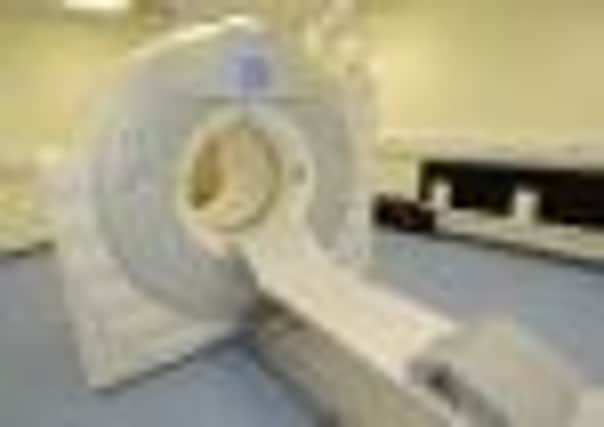CT scans on children can triple risk of brain cancer, experts warn


Despite a very small absolute risk, scientists called for greater efforts to ensure that use of the 3D X-rays is justified.
Previously it was widely assumed that low-dose CT, or computed tomography, scans posed negligible risks even to children, who are more sensitive to radiation than adults.
Advertisement
Hide AdAdvertisement
Hide AdThis belief was based on risk estimates derived from survivors of the atomic bombs dropped on Japan at the end of the Second World War.
But experts say there are crucial differences between exposure to radiation from an atomic bomb and from a medical procedure. For instance, CT scans are usually focused on a particular region, such as the head, rather than the whole body.
British-led scientists conducting the new research studied data on around 180,000 patients under the age of 22 who had CT scans at UK hospitals between 1985 and 2002.
Their cancer rates were compared with those from the general population, reported in the UK National Health Service Registry.
The results showed that children younger than 15 would receive enough radiation from two to three head CT scans to triple their risk of developing brain cancer.
Because brain and bone marrow do not absorb X-rays at the same rate, the figures for leukaemia are slightly different. In this case, five to ten head scans were sufficient to triple the cancer risk.
In general, the scientists calculated that the relative risk of leukaemia increased 0.036 times for every extra milligray of radiation exposure.
One milligray is the amount of radiation energy absorbed by one kilogram of human tissue or other material.
Advertisement
Hide AdAdvertisement
Hide AdFor brain tumours, the increased risk per milligray was 0.023.
The findings are published in the latest online edition of the Lancet medical journal.
They showed that the chances of an individual developing cancer after a CT scan remain tiny.
For children under ten who receive head scans, around one extra case of leukaemia and one extra brain tumour per 10,000 patients would be expected during the decade after the procedure.
The study did not look at the reasons why the children underwent CT scans, but ensured it was not because they already had brain tumours or leukaemia.
Lead researcher Mark Pearce, from the University of Newcastle, said: “Further refinements to allow reductions in CT doses should be a priority, not only for the radiology community, but also for manufacturers.
“Alternative diagnostic procedures that do not involve ionising radiation exposure, such as ultrasound and MRI [magnetic resonance imaging], might be appropriate in some clinical settings.
“Of utmost importance is that, where CT is used, it is only used where fully justified from a clinical perspective.”
Advertisement
Hide AdAdvertisement
Hide AdCT scans were introduced in the 1970s and their use has increased greatly over the past decade.
The number of CT scans in the UK rose by 68 per cent between 1998 and 2008. In 2007, an estimated 72 million scans were carried out in the US.
Professor Richard Wakeford, from the Dalton Nuclear Institute at the University of Manchester, said: “The radiation risks the study has detected are at the level currently assumed for the purposes of radiation protection, ie small, which is reassuring.
“However, as with all sources of radiation exposure, this small risk should be taken into account when radiation is used.”